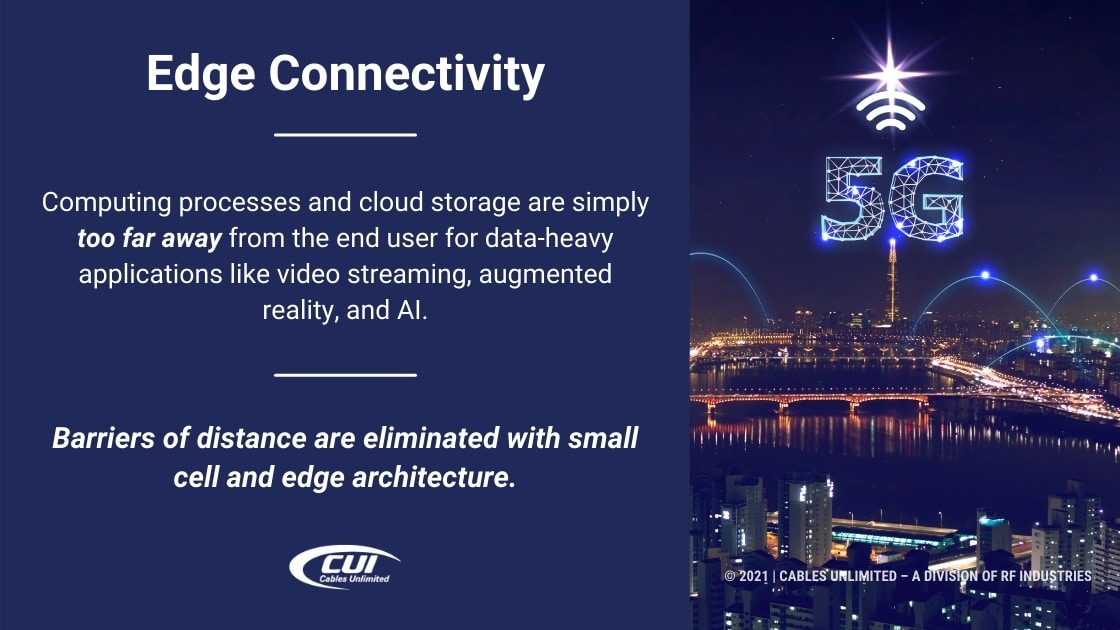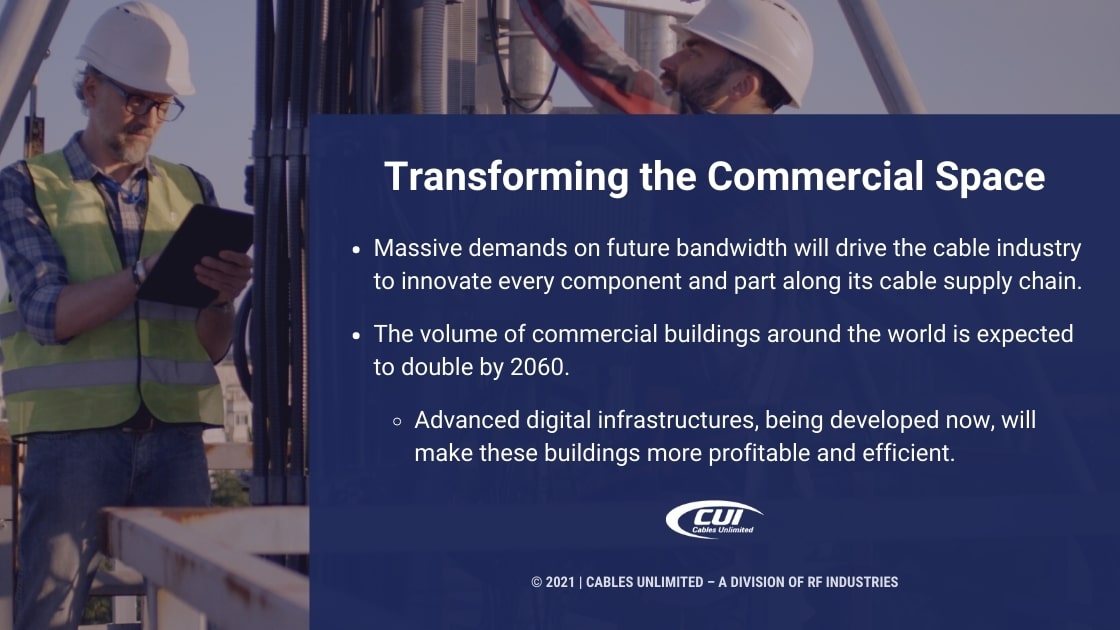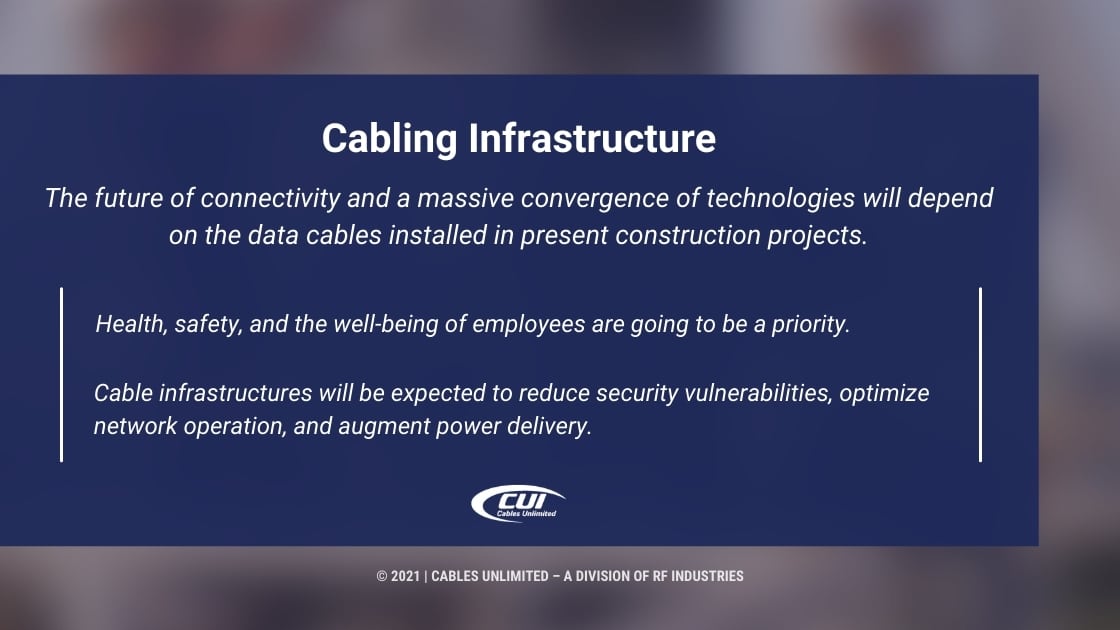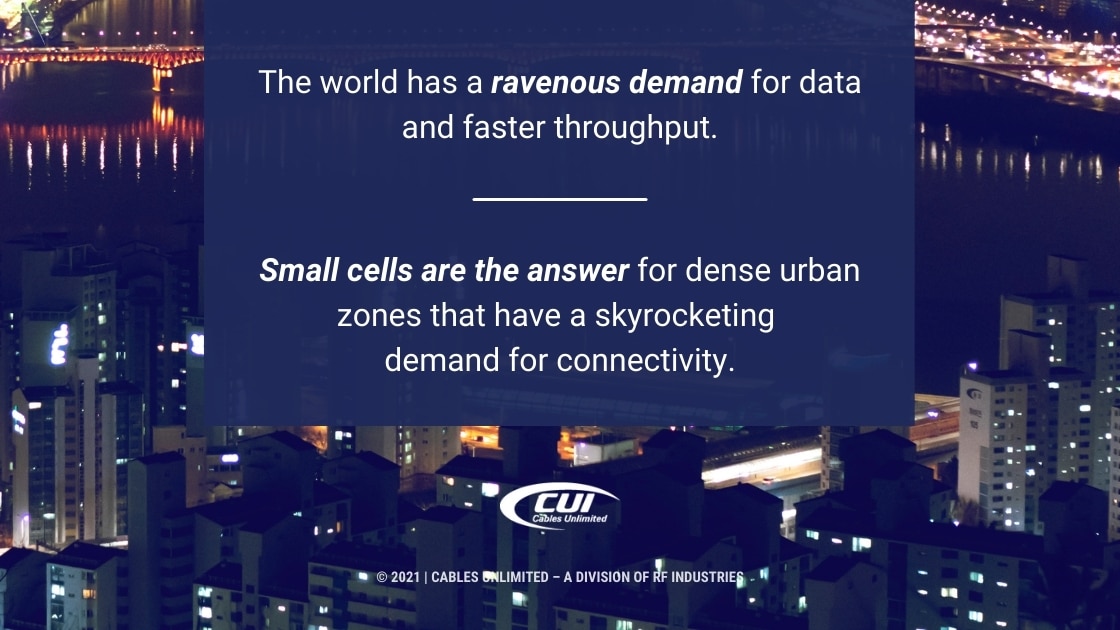In a 5G-connected generation, small cell technology has begun its transformation into a new breed of form factors and architectures. The next generation must provide increased capacity, service multiple bands and carriers.
The continued 5G rollout promises ultra-high speeds, millions of devices per square mile, and latencies in milliseconds. Wire and cable industries are on the threshold of significant and interrelated upward growth trends. The trend dynamics will have a profound impact on mobile connectivity and small cell technologies.
Three trends are driving the diversity of small cell form factors:
- Cellular technologies are progressing beyond generic broadband. Cellular is being embraced by several industries with different purposes. Each environment will have a specific form factor requirement for its small cell design. Diversification requirements from large, distributed radio systems to invisible units installed in the pavement for traffic control.
- Virtualized mobile networks are one of the hottest topics in telecommunications. The opportunities for virtualization are extraordinary. Small cell designs will include virtualized cells from a central controller with low-power radio heads. This approach to network design will change the economics of cellular.
- As 5G and its technologies continue to proliferate, small cell designs will push densification to additional levels. 5G is often deployed in high-frequency bands and supports every kind of user, application, and locale.
5G, mobility, and the Internet of Things are driving telecommunication providers to build networks with a wide range of connectivity characteristics. Elite cable companies and their supply chains are concentrating on the periphery of their networks, in a move to get closer to consumers.

Edge Connectivity
Millions of devices are coming online, making low latency for large geographically distributed networks difficult to deliver. Computing processes and cloud storage are simply too far away from the end user for data-heavy applications like video streaming, augmented reality, and AI.
Small cell networks solve this obstacle by moving the cloud and internet connectivity closer to the user. Barriers of distance are eliminated with small cell and edge architecture. These technologies will solve a multitude of connectivity problems for the enterprise.
Transforming the Commercial Space
5G and 6G speeds are revolutionizing the commercial enterprise. We expect an estimated 30 billion devices to come online in the next few years. Massive demands on future bandwidth will drive the cable industry to innovate every component and part along its cable supply chain.

Commercial networks are beginning to experience paradigm shifts with the converging network technologies coming online. Traditional network architectures include door locking hardware and access control systems. They now call on these same networks to monitor health and safety systems for each employee. Temperature checks and social distancing will be part of the overall network configuration of the building.
Cable companies are designing advanced infrastructure layers to accommodate burgeoning electronic supply chains. Next-generation services and small cell strategies are accelerating at unparalleled rates.
Industry experts believe the growth of core technologies and smart cities exist within the building themselves. We expect the volume of commercial buildings around the world to double by 2060. Advanced digital infrastructures being developed now will make these buildings more profitable and efficient.
Efficient designs of small cell single units and clusters will alleviate much of the bandwidth pressures cable companies are facing.
Read more in our blog: Single-Mode Fiber (SMF) and Smart City Infrastructure Network: Network Connectivity and Data Management

Cabling Infrastructure with Small Cell Technology
The future of connectivity and a massive convergence of technologies will depend on the data cables installed in present construction projects. Building owners must recognize the impact of future usable space, construction costs, and operational expenses.
Health, safety, and the well-being of employees are going to be a priority. Future cable specifications for monitoring a building full of people will differ markedly from tracking an unoccupied warehouse. Cabling infrastructures will be value-engineered to reduce costs and reinforce the evolution of small cell commercial technologies.
Cable infrastructures will be expected to reduce security vulnerabilities, optimize network operation, and augment power delivery.

5G and advanced network deployments are accelerating around the world. The number of cities with 5G networks have increased by over 350% in the last year. Commercial 5G is advancing faster than any other network technology in history.
Building managers highlighted reliable network connectivity as a priority in most commercial operations. Again, small cells will solve many of the issues for rapid deployment and reliability connection.
The world has a ravenous demand for data and faster throughput. Small cell connectivity ensures the delivery of faster, more secure speeds.
Commercial properties, venues, and private networks are transforming the world with small cell technology buildouts. Small cells are the answer for dense urban zones that have a skyrocketing demand for connectivity.




